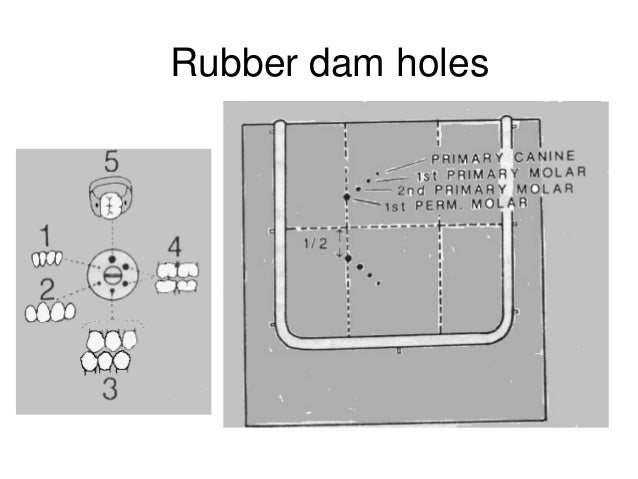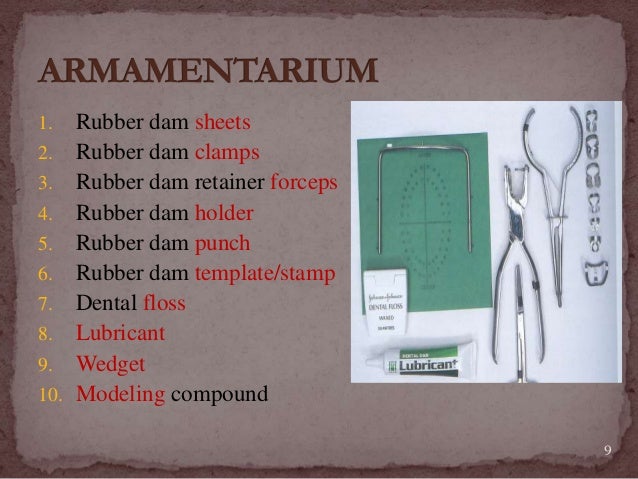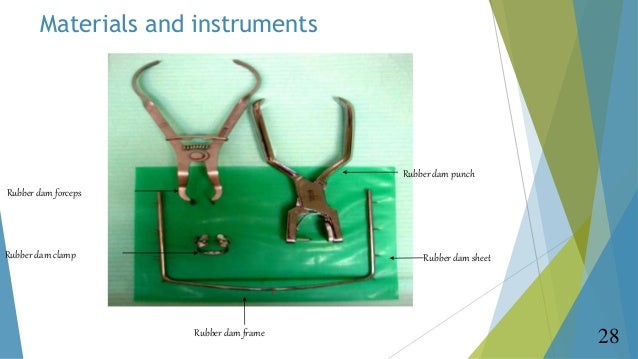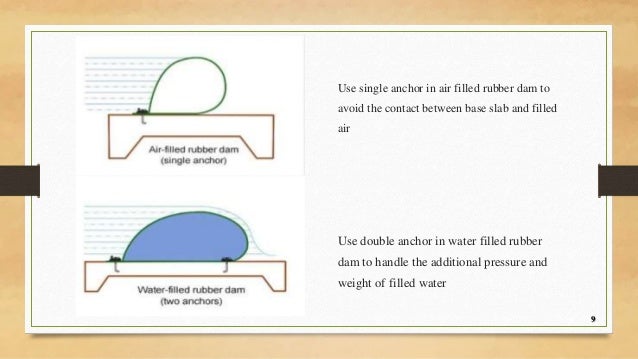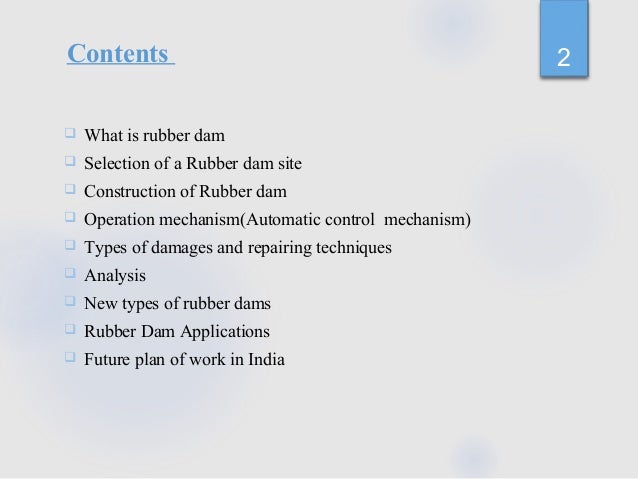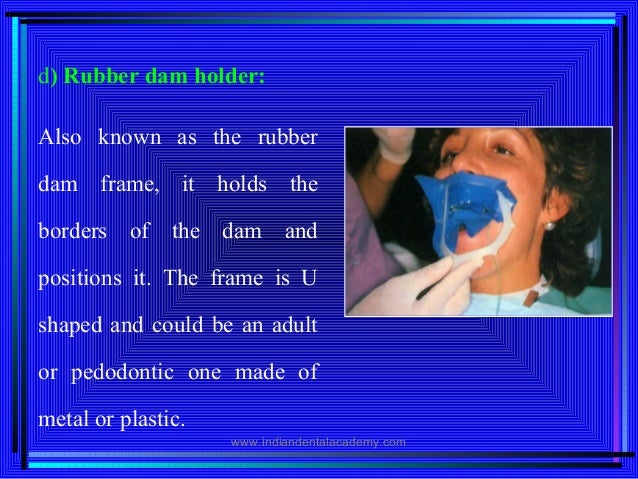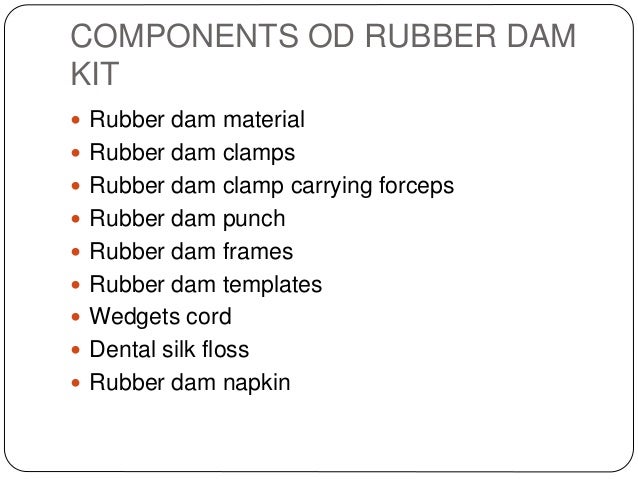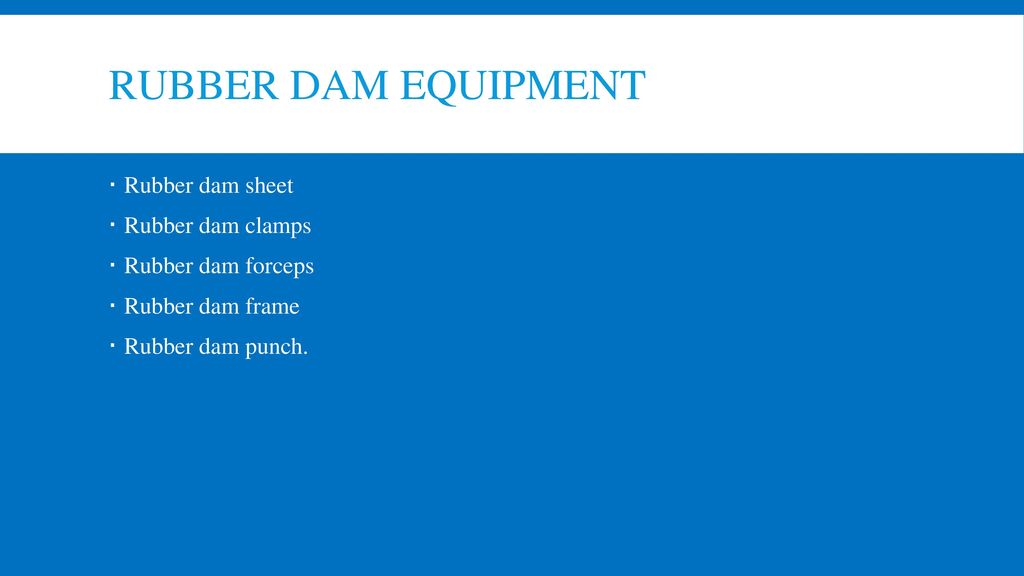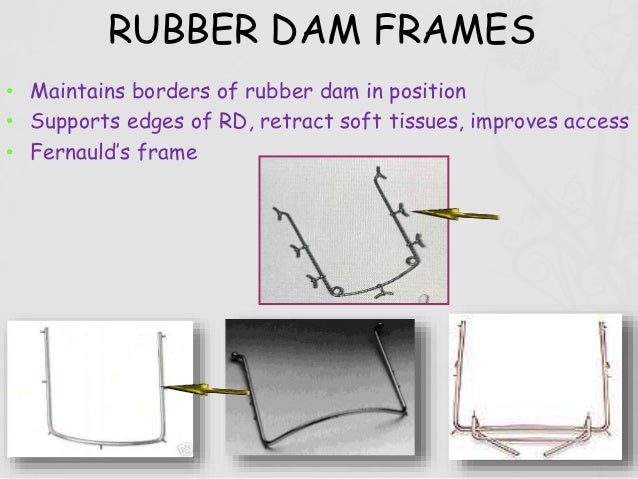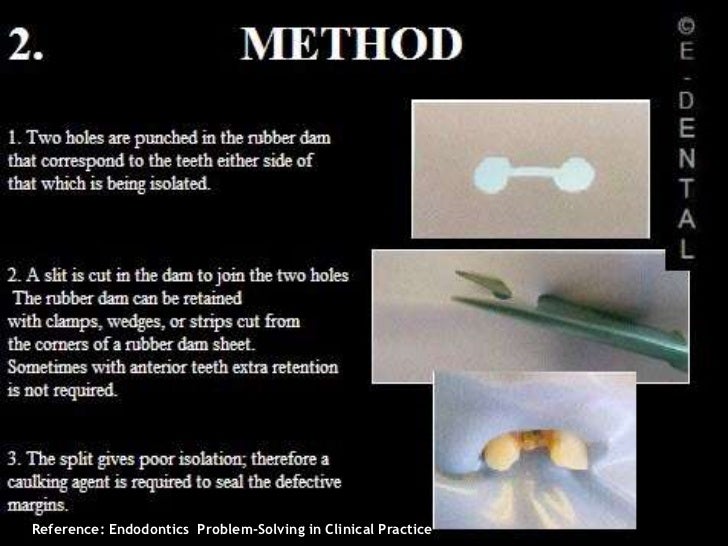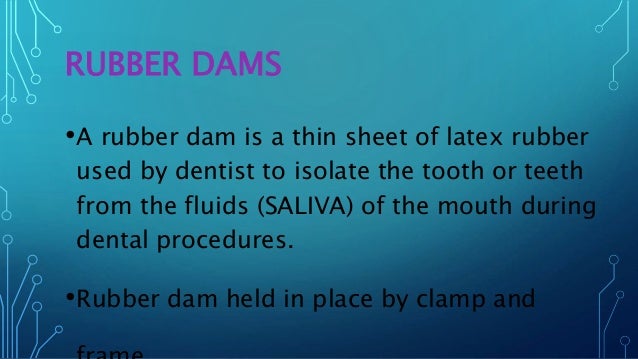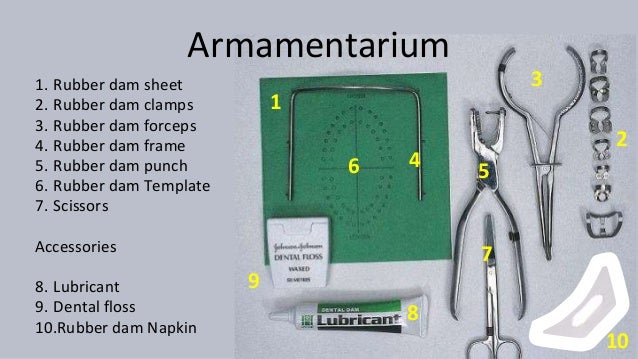Rubber dam clamp and frame dam clamp and frame carried to mouth as one unit and placed clamp in place with four point contact and rubber tucked under the wings 20.
Rubber dam application techniques slideshare.
Application techniques double motion techniques.
A viewer requested a close up video on the hole size and application of the rubber dam.
Rubber dam application rubber dam undoubtedly is one of the best methods for providing isolation from saliva and soft tissues.
Errors in rubber dam application if the.
Rotating metal disc bearing 5 to 6 holes of different sizes according to size of teeth.
The rubber dam is stretched over the wings of the selected clamp.
Rubber dam template stamp both have positions of the teeth marked on them and are used to transfer them to the rubber dam sheet for holes to be punched.
The rubber sheet is punched with the rubber dam punch.
It allows a range of rotation for the clamp so that it may be positioned on teeth that are mesially or distally angled.
Split dam technique indication insufficient coronal structure single fix prosthesis abutment tooth for bridge partially erupted tooth steps two overlapping holes are punched.
Rubber dam dr nilesh rathi 2.
Forgive the minor audio miscues and enjoy the learning experience.
Aids isolation from bacteria of saliva.
Rubber dam punch used for making holes in the dam parts a.
A sharp pointed plunger.
An easy way of placing the rubber dam in a neat and quick manner.
Introduction dr sanford christie barnum in 1864.
Rubber dam forceps ash or stokes pattern ivory pattern it has notches near the tips of their beaks in which to locate the holes of a rubber dam clamp.
Advantages isolation of the tooth from saliva blood gingival exudates.
Placement of rubber dam before placing the rubber dam dental chair adjusted for optimal patient comfort usually administering anesthetic precedes application of rubber dam rubber dam and retainer can be placed sequentially provides maximal visibility when placing retainer reduces risk of impinging on gingival tissue 22.
Barnum in 1864 the rubber dam is considered the optimal method to isolate a dental operative field and to prevent moisture contamination during the placement of direct restorations and endodontic procedures.
Camera courtesy dr shihi.
With the help of an assistant the dam and clamp are placed in position in the patient s mouth.
Developed by sanford c.
Clamp placement prior to the rubber dam testing the clamp s stability retention 52.
Rubber dam method application by dr hodson in 1870.






